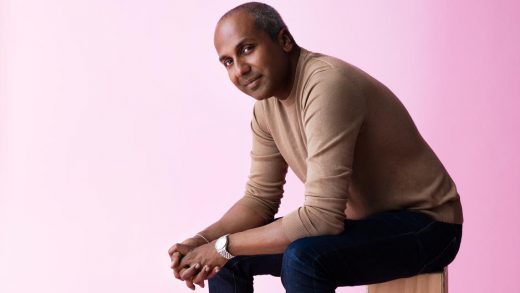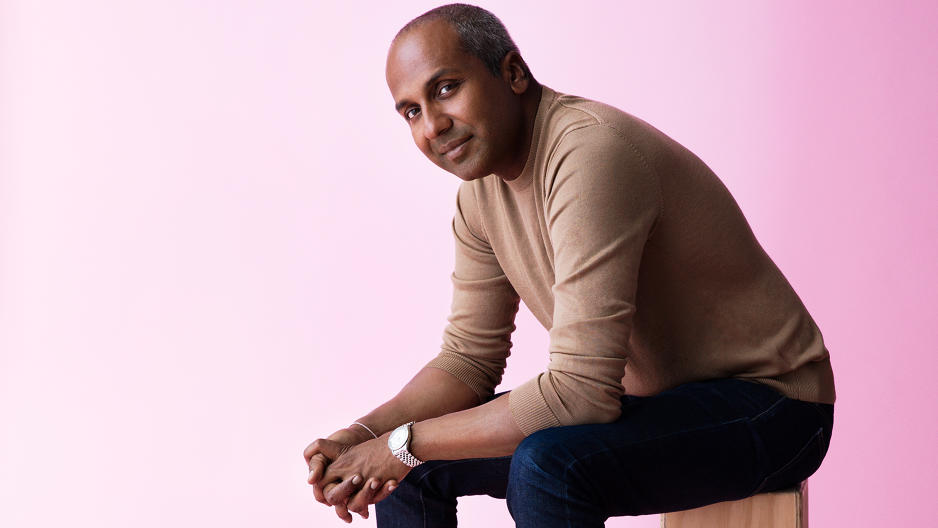How This Exec Used Social Media To Turn His Layoff Into A Career Reboot
When he was the chief digital officer at New York’s Metropolitan Museum of Art, Sree Sreenivasan created the museum’s much-lauded app and redesigned its website, attracting millions of digital visitors and helping to increase attendance by young people. Then, in June 2016, the financially troubled museum eliminated his and several other positions due to budget cuts. Rather than be discouraged or come up with a pat storyline about spending more time with the family, the former Columbia University journalism professor turned to his peers. He posted a survey on his personal website and asked his Facebook network a single question: “What should I do next?”
Before that experiment in crowdsourcing his future had ended, Sreenivasan got an offer from another great New York institution: the city itself. Here, he discusses making the most of short-lived unemployment, and his plans to turn New York City into an even greater digital hotspot.
When you learned the Met was letting you go, what was your first reaction? Were you shocked?
It was certainly a surprise to me when it was happening at that moment. The Met had some fiscal difficulties—it’s well-publicized—for about two months when this happened.
Those two weeks [after the announcement] I was scrambling, trying to find a job, and it’s not easy to find a job, not easy to find a job in the summer, not easy to find a job you want. But I was taking all these meetings. And then suddenly the day came when the note was going to go out to staff, and I knew as soon as it goes—today in a public institution, a memo that’s written to staff ends up in the press automatically. When I was at Columbia, I used to write every note to my students as if it was being cc’d to Gawker because it often was, and Columbia Journalism School had its own category in Gawker. So I knew that would happen [and] I wanted to make sure that I also shared it. And, in fact, by the time I forwarded the note that was written internally, it had already been published in [arts journalist] Judy Dobrzynski’s blog about culture in the city. So it was pretty funny.
What kind of sacrifices had you made for the job at the Met?
What most people don’t understand is that I gave up full free tuition for my kids at Columbia to go work at the Met, and then half-tuition anywhere in the world. And it gets worse than that. It’s all pretax dollars. So, one of my friends was so mad I was leaving not for Columbia, but for me, saying your twins, 10 at the time, are leaving $1.1 million dollars on the table. That’s kind of crazy.
How did you share the news of your departure with your family?
[The announcement] was going to happen on June 17, and the last set of people I told about this situation were my kids and my parents. My kids because they’d be like, ‘Oh, is there no Christmas this year?’ And my parents are lifelong Indian bureaucrats who wouldn’t understand. And as it turned out, the 17th was my father’s birthday, and on his 72nd birthday I had to tell him that his 46-year-old son was unemployed. And it tells you something about the world we live in that I told him and he was very nice and so understanding and everything else. That was on a Friday.
When I went to the office on Monday, somebody said, ‘Oh, I loved your dad’s note.’ I said, “What note?” And she said, ‘He replied to you in the comments [of a message Sreenivasan posted on Facebook].’ And you know how it is on Facebook on birthdays and things like that, there are hundreds of comments. I missed my own dad’s note. And I had to search for it. And then I woke up at 4 a.m. on Tuesday and I finally found it, and I was crying reading this thing and it tells you, this is the world we live in, there’s so many ways to communicate, but we can’t find the one note you want.
In that same Facebook message you asked people to give you advice on what you should do next. How many people responded?
1,300 people filled in the form.
What were the suggestions?
There were some great suggestions, stupid suggestions, some fun suggestions. People really made the effort. And I’m sorry to say I haven’t processed everything yet. Someone else can categorize them. But one of them was start a restaurant. One of them was become a foreign service officer, and I looked into it just for fun. And said, “Okay, if I start today and take the test and pass the exam and then do the training, I’ll be 50 years old as a rookie foreign service officer in Azerbaijan trying to do visa stuff. That’ll be interesting, but we didn’t do that.”
Somebody dropped off a pair of Nike shoes because I said I was going to go walking. Someone sent me a check for real money, saying if you run out of dollars or lentils, here’s some money. Everybody talks about how bad the internet is and there is so much hate, but I felt like I was in a global, digital hug that I had not expected. It was new to me in a way that was so refreshing.
Ultimately, you didn’t take anybody up on their suggestions because you got a job offer from the City of New York to be the new chief digital officer. When did you get that call?
Soon after [the June 17 announcement]. The current chief digital officer, the outgoing CDO is leaving, and so we had a conversation and then I went through the process and here I am.
Are you daunted by the digital needs of New York City? There are nearly 9 million people living here, after all.
I’m following two wonderful women. Jessica Singleton and Rachel Haot. Rachel was the first, and between the two of them, they really set the stage for what we can build on now, and the mayor is very committed to technology. If you check out the New York City Digital Playbook, it explains what the plans are, including communicating more simply with the residents, testing things with the residents, connecting with the residents, and making sure that everybody feels involved.
When most people they talk about a job, I know sort of what you do, but I don’t really. It’s between you and your boss. Well, our boss decided to tweet what my job is. He said, welcome, I’m going to make New York the most tech-friendly, the most transparent, and most digitally equitable city in the world, which is great and simple and scary. Now somebody can pick this up and say, ‘What have you done for me lately?’ from these three things, what have you achieved? And it’s not even one of, but the most, so it’s going to be exciting and New York is the greatest city, so I think if we use our collective energy here, there’s so much that can be done.
What are you most excited about when it comes to this new role?
I called myself chief listening officer [at the Met]. I think that’s what the CDO job is, because you have to listen for ideas and there are so many good ideas. I don’t think New York has a monopoly on good ideas, but people listen to them from everywhere. I’ve got so much to learn. What is exciting is that the technology team is very strong, there are multiple prongs of the technology infrastructure that’s already been built. Now the question is, how do we take that to the next level? Another part of the job is working with startups and getting them interested, excited, committed to being born here, staying here, thriving here.
Let’s do a lightning round of questions. First, what do you think is the best recent tech development?
The rise of personal live streaming. It affords people the opportunity to connect with other people, places, and organizations. And the best part about it is there’s no post-production.
And the worst?
All the hype around new technology. Everybody’s still searching for what’s next. They don’t give enough importance to the tools they’re already using.
What’s your favorite social media account at the moment?
National Geographic on Instagram. It’s a great example of how you use the platform.
Who would be on your list of the most creative people?
Liza Donnelly, a cartoonist for the New Yorker. She’s reinventing cartooning for the 21st century.
How do you stay productive?
I do everything on my phone, as much as I can, so that I’m responding and getting things done throughout the day.
This interview has been edited and condensed.
related video: How Social Media Is Bringing People And Brands Together
A version of this article appeared in the November 2016 issue of Fast Company magazine.
Fast Company , Read Full Story
(13)














